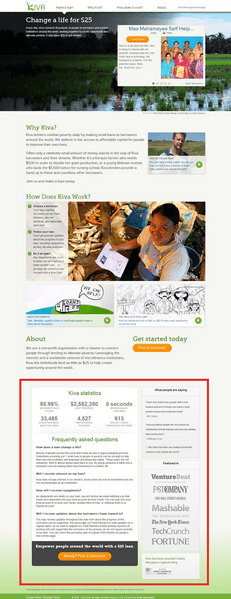If you run an online business, then building and optimizing an effective sales funnel is not a “suggestion” or a “good idea”.
It is an imperative part of achieving business growth with a streamlined and repeatable process.
With a properly built sales funnel in place, you will be able to regularly attract new clients and ensure that your company’s income increases every single year.
Without one, your company has little hope of surviving the competitive world of 21st-century business.
Luckily, the process for creating and tweaking a fully functioning sales funnel is much simpler than most people think. And today, I’m going to walk you through the sales funnel stages and provide optimization tips so you can maximize your revenue.
What is a Sales Funnel?
A sales funnel is a business’ way to guide people through the buying process towards their products and services.
For many of you, the thought of having a proven system that will allow you to consistently attract new customers and increase your revenue seems outlandish at best, and downright scammy at worst.
However, there actually is a simple formula that nearly every successful online businessman and marketer in the past two decades has followed to transform their businesses and achieve their goals.
Although the variables of the formula will vary from business to business, the general process and core concepts remain identical.
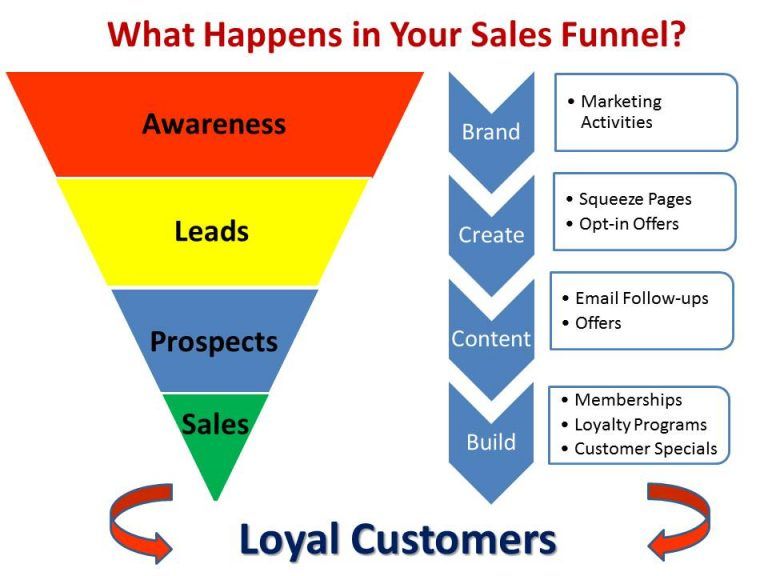
To put the process in Layman’s terms.
Creating awareness + generating leads + qualifying leads + converting leads = sales.
If you are confused about how these steps work, don’t worry.
In this article, I am going to explain exactly how you can set up a fully armed and operational sales funnel in record time.
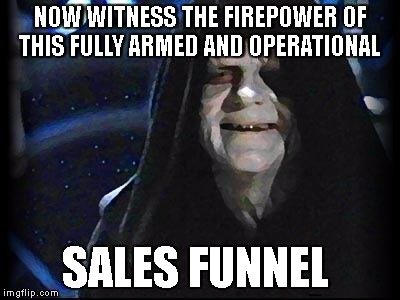
Let’s begin.
The 6 Sales Funnel Stages
In order to master the stages of the sales funnel, you need to have a clear understanding of each phase.
As you master a data-driven approach to selling and qualifying leads, you can easily fill your sales pipeline with prospects who are sales-ready.
Stage 1: Marketing and Branding
The first stage of the sales funnel is also the most challenging.
Unlike the later phases of the process, marketing and branding require a significant amount of work up front without any immediate results.
And even though each stage is important in its own right, great marketing is the foundation of all great sales funnels.
You can’t have a sales funnel without first generating interest and building an audience through targeted marketing campaigns.
But how exactly do you do this?
By creating content that your ideal customers need and want.
Although the delivery system (e.g. video, blogging, or podcasting) will depend on your personal talents and your audience’s preferences, what you are delivering will be the same.
Massive, colossal, monumental value.
Whether you are publishing podcasts with industry leaders, 20-minute daily videos, or 2,000+ word guides, the only way to succeed with the following 5 steps is to first become a master at delivering value to your audience.
It is a requirement to attract viewers, build trust, and create customers for life.
Stage 2: Lead Generation
Once you have consistent traffic flowing to your website, it is time to turn those new audience members into purchase-ready leads.
How?
By creating a lead magnet.
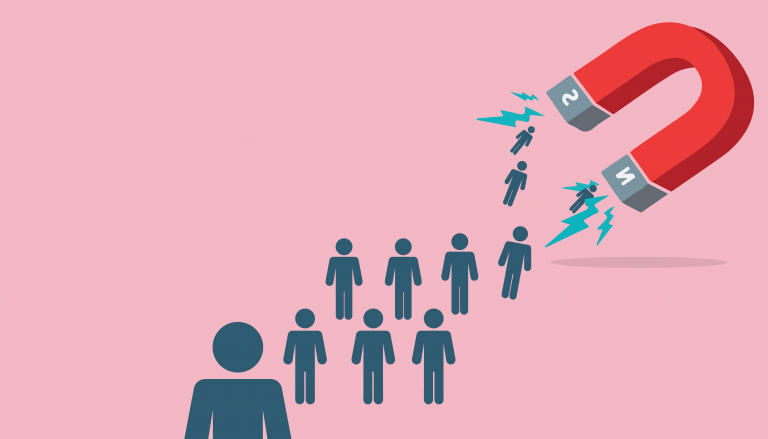
The key to generating leads online is to offer your audience premium content in exchange for their contact info.
For example, here are two lead magnets that I use for Money Journal to generate new leads every day.
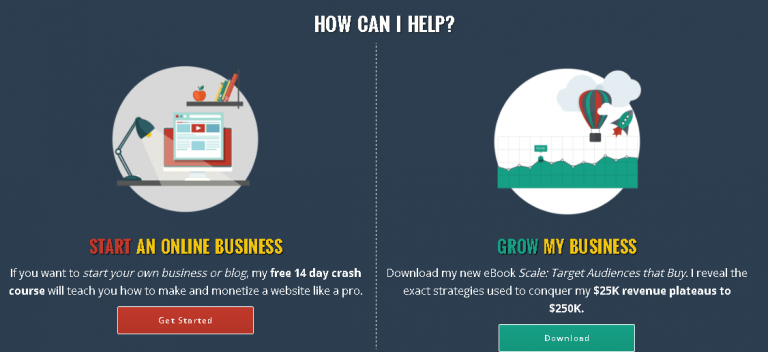
While this might sound simple enough, there are a few key points to remember so that you can maximize your lead generating potential.
First and foremost, you must realize that you can never assume you know what your audience wants.
The only way to be certain is to ask them.
So before you go through the effort of researching, creating (or outsourcing) and polishing your new lead magnet, take a few weeks to actually figure out what your audience really needs.
Use services like Qualaroo and poll visitors on your website, send out email surveys, or engage your social media following and request their feedback.
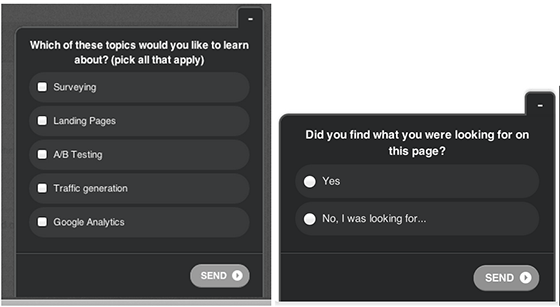
Once you have surveyed your audience and found a need that you can satisfy, the next step is to determine how you are going to deliver your lead magnet.
While an ebook might be the cliche “classic” that most internet marketers turn to, your audience might prefer an audio lesson, intensive video course, or even a product sample.
Analyze your KPIs across your different content channels to figure out what style of content your audience prefers before you start creating your lead magnet.
And finally, with your research completed, it’s time to deliver 10X the value that your new leads are expecting.
Your lead magnet is your audience’s first impression of your product quality and will, in large part, determine whether leads convert during the later stages of the funnel.
Therefore, it is crucial that you deliver above and beyond what any reasonable person would expect of you.
If you quote your lead magnet at a $19 value, then you should be delivering at a $97 value.
No exceptions.
Here are a few examples of incredible lead magnets to get your creative juices flowing.
Here’s Digital Marketer’s lead magnet that generated over 35,000 leads in only 60 days!
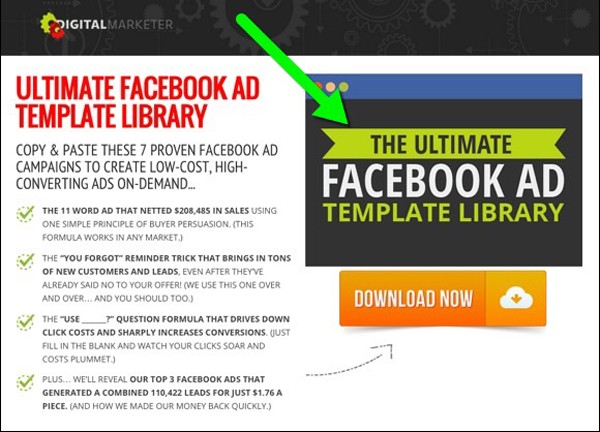
And here’s one from Hubspot.
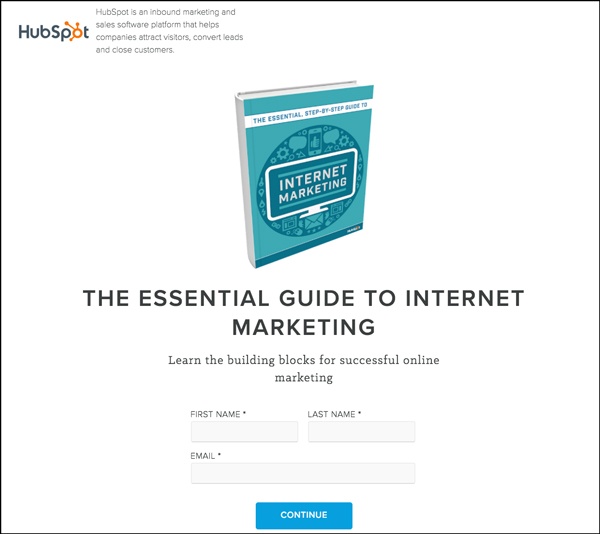
If you want to go beyond a single sitewide lead magnet, you can use content upgrades to capture more leads in every blog post you write.
Stage 3: Lead Qualification
If you follow the first two steps of this process consistently, you will be able to generate a significant number of leads who are interested in becoming customers.
However, only a small fraction of the interested leads are actually qualified to become paying customers.
So how do you separate out the conversion ready prospects from the energy vampires?
The first step is to clearly define what a qualified lead is. Here are some questions to ask yourself:
- How old are they?
- What is their occupation or industry?
- What specific needs do they have?
- How much disposable income do they have?
Once you have developed a system for qualifying leads, the next step is more nuanced.
If you are in a B2B business, qualifying leads will typically be a simple task due to the lower volume of leads that you will be handling.
A simple email questionnaire or quick review of their company should tell you all that you need to know.
However, if you are delivering products directly to consumers, the number of leads that you will have to generate make it impossible to qualify every single one.
This means that when you are running a B2C business or even a large scale B2B, the lead qualification process requires a tiered approach.
Let me explain what I mean.
No matter what type of company you have, you should always have at least three pricing tiers with one additional “specialty tier” for high paying customers.
- Low end: Under $100
- Mid-range: Under $500
- High-end: Under $2,000
- Specialty: $2,000 and up
While the exact pricing may alter from business to business, the core of this concept remains the same.
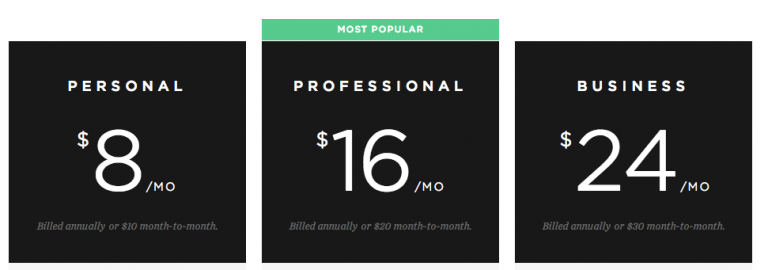
This means that a qualified lead for a B2C company is simply a lead who has been filtered through an earlier stage of your sales funnel.
So for example, any lead who has opted-in to your lead magnet is automatically “qualified” to receive promotions and pitches for your low-end product (more on this process in a minute).
Any lead that converts on the low-end offer automatically qualifies to be sold on your mid-range offer, and so on and so forth.
Since the B2C sales process is not as hands-on than the B2B process, this is a viable qualification process that will not require any extra investment on your part.
Stage 4: Pitching Your Product/Service
Once you have qualified your lead, now it is time to pull out all the stops and get ready to make some sales.
While there are many different ways that you can pitch your product or service, there are three tactics that stand a cut above the rest.
- Webinars
- Live Demos
- Phone Calls
Webinars are a fantastic choice for anyone in the information product business because they allow you to provide value while pitching your offer to leads.
This is the general sequence that most webinars should follow.

If you want to learn how to plan and execute an awesome webinar, then check out the Ultimate Webinar Checklist by Content Marketing Institute.
Live demos, on the other hand, are a fantastic way to generate interest if you run a SaS company.
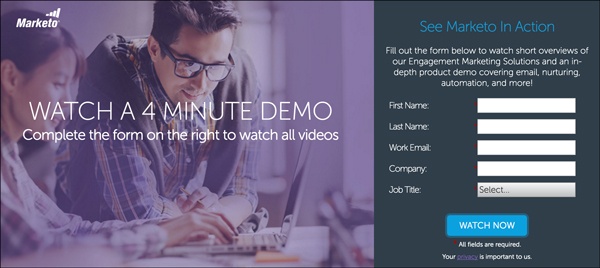
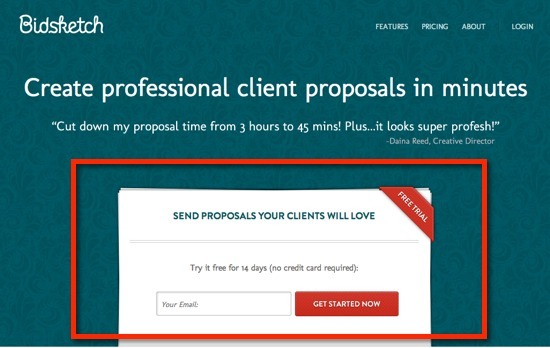
With live demos, you have the option to either give clients a preview of your software or product at work or even allow them to test the product for themselves for a limited time.
What’s great about this tactic is that you can actually use it as your lead magnet and your pitch simultaneously to streamline your sales funnel and increase the speed of execution.
And finally, if you are creating a sales funnel that is designed to sell a high-end product or service that will cost over $2,000, then phone sales is the undeniable king.
Even though it is one of the most challenging and time-consuming ways to pitch a product, over the phone selling allows you to address and overcome your lead’s obstacles in real time.
This makes it a powerhouse for closing bigger deals and landing clients who will work with you for life.
Stage 5: The Follow Up
With the pitch made, it is likely that you have already converted a number of your leads into paying customers.
However, this is no time to rest on your laurels.
Many of the leads that you did not close on the first pitch are still willing to invest with your company if you are willing to put in the effort to convert them.
In fact, many studies suggest that only 2% of sales are actually closed after the first interaction, whether that is an advertisement, phone call, or webinar.

This means that once you have made that initial contact, it is time to follow up like there is no tomorrow.
But how do you do this without annoying or over pressuring your lead?
For those of you who used a webinar or similar tactic to make your pitch, the best way to follow up is to simply email your clients directly with a limited time offer.
For example, let’s say that you used a webinar to pitch your new “Total Body Transformation” program to your audience.
At the end of the webinar, roughly 10% of the audience converted on the offer and invested in your program.
However, another 20% clicked the ‘Buy Now’ button but did not take any further action.
Those leads are clearly interested in your product and are probably willing to spend the money if you can give them that extra push.
The key is to follow up the next day, while the presentation is still fresh in their mind, with special offers, payment plans, and other incentives.
Since emails are an unintrusive form of contact and the customer was already interested into what you were selling, chances are high that they will respond to your follow up amiably.
On the other hand, if you used a more personal and direct tactic like a 1-on-1 live demo or a phone call, then you need to get back on the phone and follow up.
You typically want to wait 2-3 days so that your follow up doesn’t seem needy but is still accomplished while your product is fresh in their mind
Stage 6: Income for Life and the Art of the Upsell
Congratulations!
You have now taken a (hopefully) large percentage of your original audience base and filtered them through the first five stages of your sales funnel.
But your work is not done yet.
Sure, you have made a healthy profit, and yes as long as you continue growing your traffic, your funnel will continue generating a nifty little income.
But if you are looking to take your sales funnel to the next level and generate an income that can eliminate financial worries for you and your family forever then there is one final step.
The upsell.
It is a pretty common saying in the business world that the easiest sale you will ever make is an upsell.
And it’s true.
Once a customer has already purchased something from you, as long as their experience was outstanding, then they will be more inclined to buy from you in the future and take advantage of new offers.
This is where you can make up a serious income without any serious effort.
And yes, you could continue releasing updated products and services to meet your customer bases changing needs.
However, I have found that the best solution is to create a subscription service that automates your income and provides clients with an improved product or service each month.
For example, if you run a company that specializes in social media training, you could create a $97 – $497/month subscription service where you provide personalized training, case studies, and audits of your client’s social media efforts.
While this process would require consistent maintenance and a regular investment each month, it would not be as time-consuming as creating a new product each quarter and will yield a much higher ROI.
Bonus Round: Gratitude and Creating Customer Advocacy
Ok, so now that your sales funnel is finished, there is a final step that separates the industry leaders from the bottom 99%.
Creating customer advocacy.
All truly great businessmen know that your customers are your greatest marketing asset. If you are able to cultivate your relationship with them and create a real sense of community, you will become unstoppable.
I am sure that most of you are familiar with Tony Robbins, and whether you love him or hate him, it’s hard not to respect his prowess in business.

At his live business events, Tony will often ask the audience to share how they found out about his work.
And 90% of the audience will always give credit to word of mouth marketing.
Not bad for a company that generated $400 million the day it went public.
So how was Tony able to create this kind of customer advocacy and support?
By genuinely serving and expressing gratitude to his audience.
Whether someone experienced a life-changing epiphany or uncovered a tactic that allowed them to accelerate their business and life, countless Tony Robbin’s alumni leave their experience with a feeling of responsibility to share his work with their friends and family.
And that is your goal.
The first step to creating customer advocacy is to create products and services that are so good your audience feels a moral obligation to spread the word.
Once this has been accomplished, you need to cement the relationship by expressing your gratitude in tangible ways.
While the occasional “Thank You” email is always nice, it’s even better to find a way that you can give your customers extra value without asking for anything in return.
Whether you send them a link to a free video course, a free call with one of your consultants, or even a copy of your latest book, no act of gratitude will go unnoticed or unreciprocated.
Sales Funnel Optimization
Now that you know what a sales funnel is and the exact stages you need to take your audience through in order to generate serious cash flow, let’s talk about some tips and tricks to optimize this process.
1. Go Where Your Most Qualified Leads Go
The first step to optimizing your sales funnel is to ensure that you are casting your proverbial net in the right places.
Your ideal marketing channels will vary widely based on your business, niche, and ideal customer profile.
Just because other marketers have found success on Facebook, LinkedIn, or even Snapchat, does not mean that your particular niche will garner the same results.
Research your market and uncover which platforms, forums, and blogs your ideal customers frequent.
Then, double down on the time and revenue you invest in those places.
2. Personalize the Process to Increase Conversions
A simple but highly effective hack that you can use throughout the entire process is to personalize your sales funnel to increase the conversion rate.
Invest in a CRM platform that allows you to segment your audience based on different variables and then create custom campaigns and content for those different segments.
Personalization plays a pivotal role in ensuring the success of your sales funnel and is another component that separates the ‘good’ from the ‘great’
3. Split Test Everything
I know that it might seem like I am beating a dead horse by mentioning A/B testing on this blog yet again.
However, if I seem incessant, even obnoxious in my insistence that you test run consistent split tests within your business, it’s for a good reason.
There is nothing that can have a bigger impact on your success in the online world than knowing how to effectively “quarantine” certain variables to find out what performs the best.
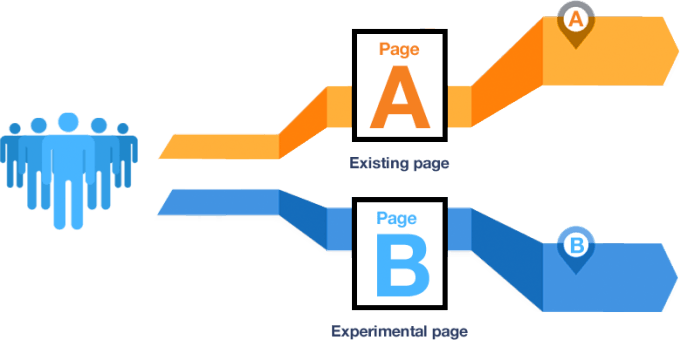
From the type of content that your audience engages with most to the headlines on your CTAs, the entire sales funnel needs to be absolutely riddled with tests.
One great example of the power of split testing is how the company Kiva increased conversions by more than 11% simply by adding social proof and statistics to their page.
Another example is how small changes to the call to action resulted in an increase of over 49% in click throughs.
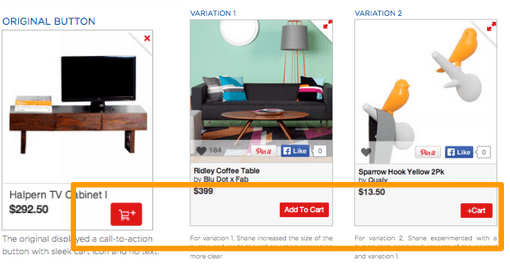
Do you see how small changes can lead to big results for your sales funnel?
If you think you are testing enough, I want you to double the amount of testing that you are doing and then add in one more just for good measure.
4. Realize that ‘Not Now’ Doesn’t Means ‘No’
A huge mistake that many entrepreneurs make is assuming that when a client says “Not now” to an offer, what they really mean is “no”.
Most of you have probably heard of the sales acronym BANT at some point in your career.
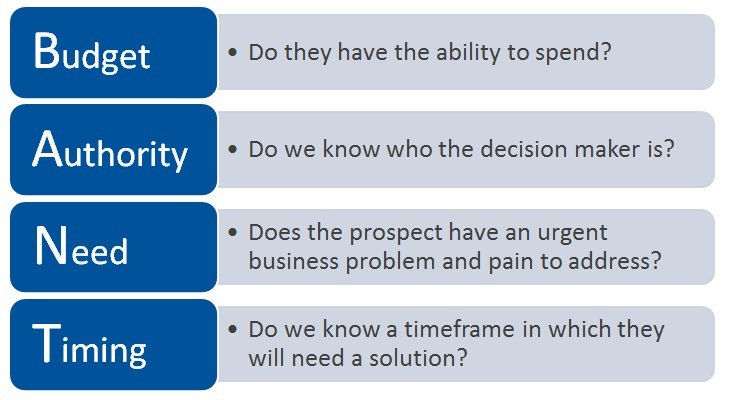
Well, there are going to be a number of leads who meet the first three parts of this acronym but not the fourth.
They will have the budget for your offer, they have the authority to close the deal, and they even have the need for it.
But maybe, just maybe, the timing isn’t right.
They could be facing familial struggles, health problems, or challenges in other areas of their business that are more pressing.
Whatever the case might be, you need to remember that with any lead, “Not now” does not mean no,
Keep these clients at the forefront of your mind and follow up with them after an appropriate amount of time has elapsed.
You will be surprised at how many of them become your biggest customers.
5. Cross Sell Leads Who Don’t Convert
The final critical mistake that many entrepreneurs make in the sales funnel optimization process is that they do not try and cross-sell qualified leads who did not convert.
In the same way that many leads will turn down your offer right now because of circumstances outside of your control, many leads might lack a serious need for a specific product.
But that does not mean that your company doesn’t offer a product or service that you could cross-sell.
For example, let’s say that you own a consulting agency and you are trying to sell a CEO on your full consulting package.
After talking with the lead for a while, you realize that they have the budget for your services, they have the authority to close the sale, and the timeline is just right.
However, they do not have the need for the full package.
But, over the course of the conversation, you notice that he keeps mentioning their social media channels and how they are trying to augment their online presence.
Now, you can change the offer to be more pertinent to their specific needs, in this case, a social media specific consulting package.
Even though you might not have made the sale you intended to make, you were still able to make a sale, deepen your business relationship, and keep the revenue steadily growing.
Conclusion
So there you have it.
The basics stages of a sales funnel and 5 key optimization tricks to ensure that you are able to come out of the gates swinging.
Now it is time for you to get out there and get to work!
Those funnels aren’t going to create themselves.
Do you have any questions about sales funnels that I didn’t answer? Do you have any advice about sales funnel optimization that’s working for you? Let me know in the comments below!

